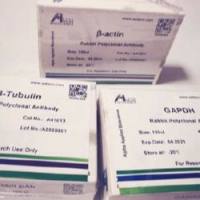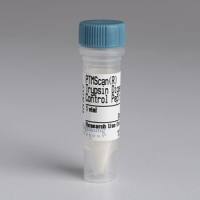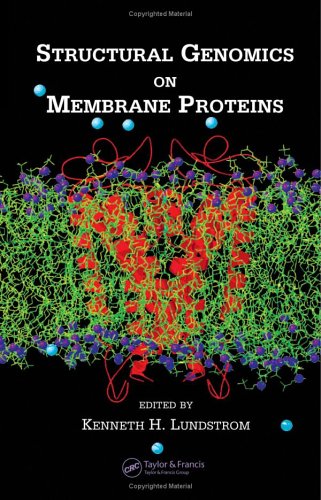Using Dali for Structural Comparison of Proteins
互联网
- Abstract
- Table of Contents
- Figures
- Literature Cited
Abstract
The Dali program is widely used for carrying out automatic comparisons of protein structures determined by X?ray crystallography or NMR. The most familiar version is the Dali server, which performs a database search comparing a query structure supplied by the user against the database of known structures (PDB) and returns the list of structural neighbors by e?mail. The more recently introduced DaliLite server compares two structures against each other and visualizes the result interactively. The Dali database is a structural classification based on precomputed all?against?all structural similarities within the PDB. The resulting hierarchical classification can be browsed on the Web and is linked to protein sequence classification resources. All Dali resources use an identical algorithm for structure comparison. Users may run Dali using the Web, or the program may be downloaded to be run locally on Linux computers.
Keywords: classification of protein folds; database searching; distance geometry; pattern recognition; protein structure alignment
Table of Contents
- Basic Protocol 1: Using the Interactive DaliLite Server for Pairwise Comparisons
- Basic Protocol 2: Searching for Structural Neighbors Using the Dali E‐mail Server
- Basic Protocol 3: Using the Dali Database to Investigate Familial Relations Among the Universe of Protein Folds
- Alternate Protocol 1: Comparing Two Structures Using the Stand‐Alone Version of DaliLite
- Alternate Protocol 2: Comparing Large Sets of Structures Using the Stand‐Alone Version of DaliLite
- Support Protocol 1: Downloading and Installing the DaliLite Stand‐Alone Program
- Guidelines for Understanding Results
- Commentary
- Appendix
- Literature Cited
- Figures
- Tables
Materials
Figures
-
Figure 5.5.1 Submission page of the DaliLite server. View Image -
Figure 5.5.2 Results summary page of the DaliLite server. View Image -
Figure 5.5.3 Structural alignment by the DaliLite server. View Image -
Figure 5.5.4 Superimposition of the two protein chains in RasMol (stereo view) obtained by clicking on the “Superimposed C‐alpha traces” link on view shown in Figure . The query structure (mol1) is blue, and the second structure (mol2) is red. View Image -
Figure 5.5.5 Interactive submission menu of the Dali server. View Image -
Figure 5.5.6 Submission page proper of the Dali server. View Image -
Figure 5.5.7 Home page of the Dali database. The user has typed estradiol receptor in the query box. View Image -
Figure 5.5.8 The result of the query for “estradiol receptor” structures. View Image -
Figure 5.5.9 A large number of nuclear receptors belonging to the same fold class as estradiol receptor. Where a sequence‐structure‐domain mapping is available, they have all been classified into the same ADDA domain family (numbered 1060). View Image -
Figure 5.5.10 Clicking on the “interact” link in Figure or 5.5.9 leads to the list of structural neighbors of estradiol receptor. Hits 1‐34 are members of the same fold class comprising nuclear receptors. Hits further down the list have a much lower Z‐score than the nuclear receptors and represent biologically noninteresting hits that match in a helical bundle motif. View Image -
Figure 5.5.11 Multiple structure‐alignment of estradiol receptor and selected structural neighbors. Notation: three‐state secondary structure definitions by DSSP (reduced to H=helix, E=sheet, L=coil) are shown below the amino acid sequences. View Image -
Figure 5.5.12 Format of the DAT file. View Image -
Figure 5.5.13 Format of the DCCP file. View Image -
Figure 5.5.14 Distance matrix representations. Unaligned: Distance matrix representation of two different proteins, one in the upper and the other in the lower triangle. Aligned: Structural alignment identifies a one‐to‐one correspondence between a subset of residues. The respective submatrices of the distance matrix display similar contact patterns. View Image
Videos
Literature Cited
| Chothia, C. and Lesk, A.M. 1986. The relation between the divergence of sequence and structure in proteins. EMBO J. 5:823‐826. | |
| Dietmann, S. and Holm, L. 2001. Identification of homology in protein structure classification. Nat. Struct. Biol. 8:953‐957. | |
| Falicov, A. and Cohen, F.E. 1996. A surface of minimum area metric for the structural comparison of proteins. J. Mol. Biol. 258:871‐892. | |
| Heger, A. and Holm, L. 2003. Exhaustive enumeration of protein domain families. J. Mol. Biol. 328:749‐767. | |
| Holm, L. and Sander, C. 1993. Protein structure comparison by alignment of distance matrices. J. Mol. Biol. 233:123‐138. | |
| Holm, L. and Sander, C. 1994. Parser for protein folding units. Proteins 19:256‐268. | |
| Holm, L. and Sander, C. 1995. 3‐D lookup: Fast protein structure database searches at 90% reliability, pp. 179‐187. In Proceedings of the International Conference on Intelligent Systems for Molecular Biology. AAAI Press, Menlo Park, Calif. | |
| Holm, L. and Sander, C. 1996. Mapping the protein universe. Science 273:595‐602. | |
| Holm, L. and Sander, C. 1997. An evolutionary treasure: Unification of a broad set of amidohydrolases related to urease. Proteins 28:72‐82. | |
| Kabsch, W. and Sander, C. 1983. Dictionary of protein secondary structure: Pattern recognition of hydrogen‐bonded and geometrical features. Biopolymers 22:2577‐2637. | |
| Kolodny, R. and Linial, N. 2004. Approximate protein structural alignment in polynomial time. Proc. Natl. Acad. Sci. U.S.A. 101:12201‐12206. | |
| Novotny, M., Madsen, D., and Kleywegt, G.J. 2004. Evaluation of protein fold comparison servers. Proteins 54:260‐270. | |
| Sierk, M.L. and Kleywegt, G.J. 2004. Deja vu all over again: Finding and analyzing protein structure similarities. Structure 12:2103‐2111. | |
| Key References | |
| Holm and Sander. 1993. See above. | |
| The original Dali reference. | |
| Holm and Sander, 1996. See above. | |
| Reviews structure comparison methodology, key results, and implications. | |
| Holm, L. and Park, J. 2000. DaliLite workbench for protein structure comparison. Bioinformatics 16:566‐567. | |
| The main DaliLite reference, which should be cited in any publication using DaliLite results. | |
| Internet Resources | |
| http://www.ebi.ac.uk/DaliLite | |
| The interactive DaliLite server for comparing two structures to each other and visualizing the structural superimposition. | |
| http://www.ebi.ac.uk/dali | |
| The Dali e‐mail server for comparing a new structure against the database of known structures. | |
| http://www.bioinfo.biocenter.helsinki.fi/dali | |
| The Dali database for browsing structural and sequence neighbors of proteins. | |
| http://www.bioinfo.biocenter.helsinki.fi/sqgraph/pairsdb | |
| The ADDA classification assigns every residue of known protein sequences into a domain family and interactively visualizes the sequence neighbors of any query protein in a multiple alignment. | |
| http://srs.ebi.ac.uk | |
| SRS at EBI and Entrez at NCBI are comprehensive search engines that cross‐reference the PDB identifier of a protein to many other databases. | |
| http://www.ncbi.nlm.nih.gov |









